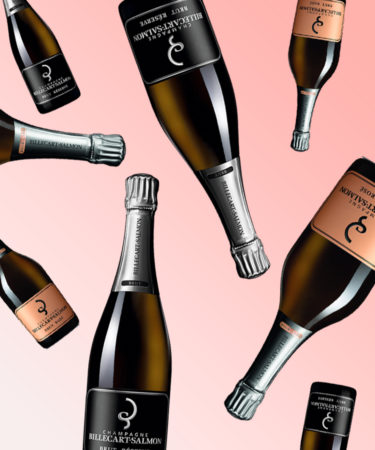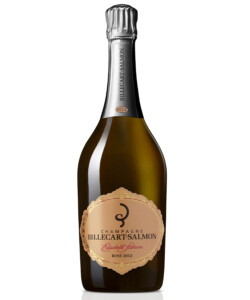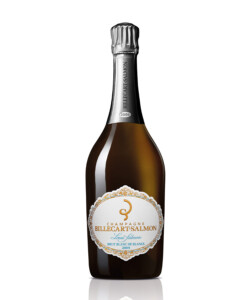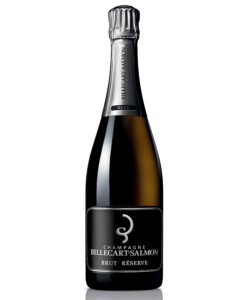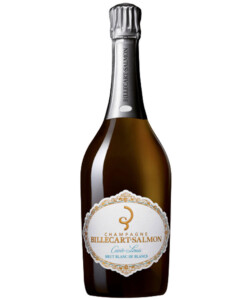The holiday season is upon us, and although we all have our own unique traditions this time of year, there’s one thing that’s present at almost every holiday gathering: Champagne. Even in 2020, when it feels as if there’s not much to celebrate, popping bubbly can make any occasion feel special.
While there are many Champagne houses that Americans know and love, there’s one brand that consistently impresses somms, consumers, and VinePair writers alike: Billecart-Salmon.
Billecart-Salmon has been around for over 200 years, but has managed to keep things fresh and interesting, introducing new methods and wines to its lineup throughout the generations.
Want to learn more about this historic Champagne house? Read on for 10 things you need to know about Billecart-Salmon.
-
First comes love, then comes Champagne.
Nuptials sparked the launch of Billecart-Salmon. After Nicolas François Billecart and Elisabeth Salmon got married in 1818, they decided to open a Champagne house in their hometown, Mareuil-sur-Aÿ, France. Billecart later teamed up with Louis Salmon, Elisabeth’s brother, who became the maison’s winemaker. Meanwhile, Billecart took charge of the winery’s commercial activity.
-
They keep it in the family.
For 202 years, since 1818, the house has been in family hands. Today, Billecart-Salmon is headed by Mathieu Roland-Billecart, the family’s seventh generation to run the house.
-
Billecart Salmon loves pink.
In the ‘70s, Billecart-Salmon hopped on the rosé Champagne trend. Jean Roland-Billecart created a light-colored pink Champagne, which has now become the brand’s flagship cuvée. The blend is made up of Chardonnay, Pinot Meunier, and Pinot Noir, and is considered one of the best sparkling rosés on the market.
-
Compared to its competitors, it’s a steal.
Billecart-Salmon Champagnes don’t come cheap. However, the bubbly brand is priced lower than much of its competition. While the company prices its vintage Champagne at around $94, brands like Krug and Louis Roederer sell their selections for double (or more) — $184 and $273, respectively.
-
Four-legged friends help make Billecart-Salmon’s bubbly.
Next time you enjoy Billecart-Salmon’s bubbles, you can thank some four-legged creatures for helping to create them. That’s because years ago, the house made the decision to go back to traditional Champagne production methods, using horses to work the soil and sheep to graze between vines and fertilize the soil in the Clos Saint-Hilaire, a single hectare (around 2.5 acres) of Pinot Noir vines. This, in turn, helps to maintain and improve the biodiversity of the land.
-
You might get lost in Billecart-Salmon’s cellars.
The maison’s cellars are composed of 2 kilometers of silent chalk tunnels that date back to the 17th century. Here, the winery’s non-vintage Champagnes are fermented in their bottles for 10 years each.
-
One of its wines is holy — at least in name.
The first Pinot Noir vines were planted in the Clos Saint-Hilaire in 1964, but the family spent more than 30 years tending to the vines before successfully making Champagne from their fruit. It wasn’t until 1995 that Billecart-Salmon’s Clos Saint-Hilaire cuvée was created. Due to the resulting 100 percent Pinot Noir bubbly’s uniqueness and purity, it was named in honor of the patron saint of the church in Mareuil-sur-Aÿ, Saint-Hilaire.
-
Its vineyard has lived many different lives.
Though for the past 56 years, Clos Saint-Hilaire has been home to Pinot Noir vines, it has served a number of purposes since the Billecart-Salmon family first opened the winery. In the 1950s, it was used as a garden, which grew fruit trees, vines, and flowers. In addition, the space formerly housed the family’s tennis courts.
-
Billecart-Salmon takes inspiration from breweries.
In 1958, Jean Roland-Billecart, the house’s current chairman, introduced a longer fermentation method to Billecart-Salmon, which helps the bubbly maintain its freshness. Inspired by techniques used by brewers, the method uses a lower temperature and a cold setting during vinification.
-
The ‘90s loved Billecart-Salmon as much as chokers and low-rise jeans.
At a three-day tasting in Stockholm, Sweden, in 1999, a jury of experts tasted almost 150 different vintages of Champagne to determine the Champagne of the Millennium. The tasters tried vintages from houses such as Krug, Taittinger, and Dom Pérignon, but the 1959 Billecart-Salmon Cuvée Nicolas François came in first place. The 1961 vintage of the same cuvée took the silver medal.
